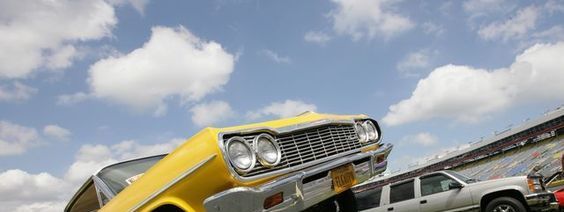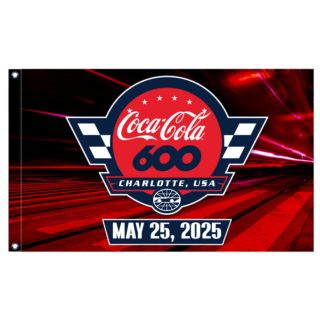The creative and colorful lowrider automobile, a West Coast custom car phenomenon that has been celebrated in music and art for more than a half-century, will be the subject of an invitation-only exhibit during the April 7-10 Pennzoil AutoFair at Charlotte Motor Speedway.
The four-day event's Showcase Garage will be home to nine examples of the iconic, 1960s-era Chevrolet Impala and a later interpretation in the form of a 1983 Oldsmobile Cutlass.
By the most basic definition, a lowrider is a car or truck whose suspension has been modified to carry the body as close to the pavement as possible. History has forgotten whom to credit for building the first lowrider, but the trend of modifying cars for "low and slow" cruising first appeared in the Mexican American barrios of Los Angeles immediately after World War II. Due to economic postwar prosperity, the Hispanic community was growing quickly and had disposable income to buy cars and other luxuries. Owners wanting a stylish look would lower their cars by any means possible, such as loading sandbags or bricks into the trunk, installing shorter wheels, and cutting the springs in the suspension with a torch. Riding low and slow in a well-maintained and brightly painted sedan, coupe, or convertible was the ultimate automotive expression for the Latin community in the 1950s.
The lowrider lifestyle was second only to the hot rodder culture in popularity among young people in Southern California, and both were considered threats to public safety and decency by the establishment. Law enforcement was constantly trying to stop nighttime cruising behavior by these young people who often were not breaking any rules. On Jan. 1, 1958, California enacted section 24008 of its vehicle code, which made it illegal to drive any car on a public road if any part of that car was lower than the bottom of the wheel rim. This was effectively a license to impound the custom vehicles of young drivers, many of whom had lowered their cars.
The law had the desired effect for about a year, until San Bernardino car builder Ron Aguirre integrated some aircraft-salvage pumps into his 1956 Corvette's suspension. That "X-Sonic," as it would be called on the show car circuit, was the first vehicle to be raised and lowered by an onboard hydraulic system. In no time at all, the Hispanic community adopted the new technology to its cars. Not only did the clever modification skirt section 24008, but the sudden drops and jumps caused by the hydraulics gave their cars a new way to express individuality. A car's "dance" became the signature move of any lowrider.
Today, custom car builders lower all makes and models of cars and trucks, but it is the long Chevrolets of the 1960s—the cars that were new when the community first began using hydraulics—that we associate most with lowriders.
The Pennzoil AutoFair features more than 50 car club displays and more than 10,000 vendor spaces offering an array of automotive parts and memorabilia. More than 1,500 collectible vehicles of all makes and models will be available for sale in the car corral that rings the 1.5-mile superspeedway. In addition, kids can enjoy face-painting, bounce houses, and other games and entertainment in the Play Zone.
Hours for the April 7-10 Pennzoil AutoFair are 8 a.m. to 6 p.m., Thursday through Saturday, and 8 a.m. to 4 p.m., Sunday. Ticket prices are $11 per day for adults, and children 13 years of age and younger are admitted free when accompanied by an adult. To purchase tickets, call the Charlotte Motor Speedway ticket office at 1-800-455-FANS (3267), or visit www.charlottemotorspeedway.com.
To purchase tickets, call the Charlotte Motor Speedway ticket office at 1-800-455-FANS (3267), or visit www.charlottemotorspeedway.com.
Keep up with all the latest news from the speedway by following Charlotte Motor Speedway on Facebook, Twitter, and Instagram, or download the mobile app.




